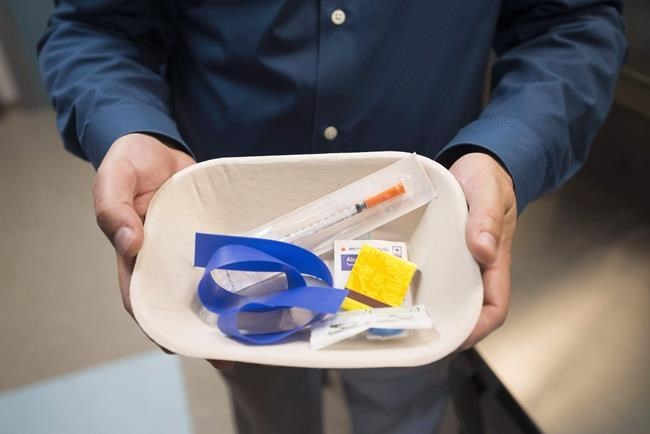The federal government says its expanded drug and substance use strategy will save more lives and provide more services to people disproportionately affected by Canada's overdose crisis.
The drug landscape has changed with an increasingly toxic supply since the Canadian Drugs and Substances Strategy was first developed in 2016, Health Canada said Monday as it outlined its "renewed" plan.
The COVID-19 pandemic also revealed gaps in the government's approach and highlighted the need for a more holistic and integrated response, the agency said.
"Substance use harms and the overdose crisis are driven by many complex and interrelated factors, and we need a full range of services and supports to address these factors," states a Health Canada web page dated Monday.
The strategy's priority areas are prevention and education, treatment, harm reduction, support for recovery, evidence-based data and substance controls.
The update puts more emphasis on addressing inequities in those areas, Health Canada said.
That includes investing in community-based programs to reach youth, marginalized groups and others who are disproportionately at risk from harms due to substance use.
Poverty, mental illness, exposure to peer substance use, unmanaged chronic pain, unstable housing and trauma are all risk factors.
Discrimination and trauma suffered by Indigenous people, Black people and LGBTQ+ people can place them at higher risk, it adds.
The strategy also focuses on substance control, including addressing organized crime that feeds the illegal drug market.
Tools for police and the justice system include training on stigma among substance users, overdose monitoring and ways to divert people using drugs from the criminal justice system to health and social services instead.
Ya’ara Saks, minister of mental health and addictions and associate minister of health, also said Monday that $21 million is going to 54 harm reduction projects across the country.
That money is part of $144 million the federal budget earmarked earlier this year to address substance use and addiction.
"Our comprehensive and compassionate approach is about reducing harms, and saving lives. We are supporting community organizations who have deep roots in their communities, have the trust of their clients and have the first-hand knowledge needed to make a real difference in people's lives," Saks said in a news release.
The Toronto Drug Checking Service, operated by St. Michael's Hospital, received $2 million of those funds over two years, said Karen McDonald, who manages the service.
The money will allow more people to get drugs checked in more locations, McDonald said in an interview.
"We're going to be able to bring on more sites so that we can interact with more service users, collect more samples," she said.
People come to the service with the drugs they plan to use and a sample is sent to a lab, McDonald said. The results come back in about a day with information on what's actually in the drugs that the user may not be aware of.
In addition to giving information to individuals, the service shares its overall findings with the community so people have a better idea of what contaminants are circulating in the drug supply.
Fentanyl samples are often found to be contaminated with central nervous system suppressants such as xylazine or benzodiazepines, which increase the risk of overdose.
"When we're talking about the fentanyl supply, what we are finding is that it is incredibly and increasingly contaminated and unpredictable," said McDonald.
"That is precisely what is driving the loss of our communities. So folks just, they don't know what it is that they're using."
This report by The Canadian Press was first published Oct. 30, 2023.
Canadian Press health coverage receives support through a partnership with the Canadian Medical Association. CP is solely responsible for this content.
Nicole Ireland, The Canadian Press



